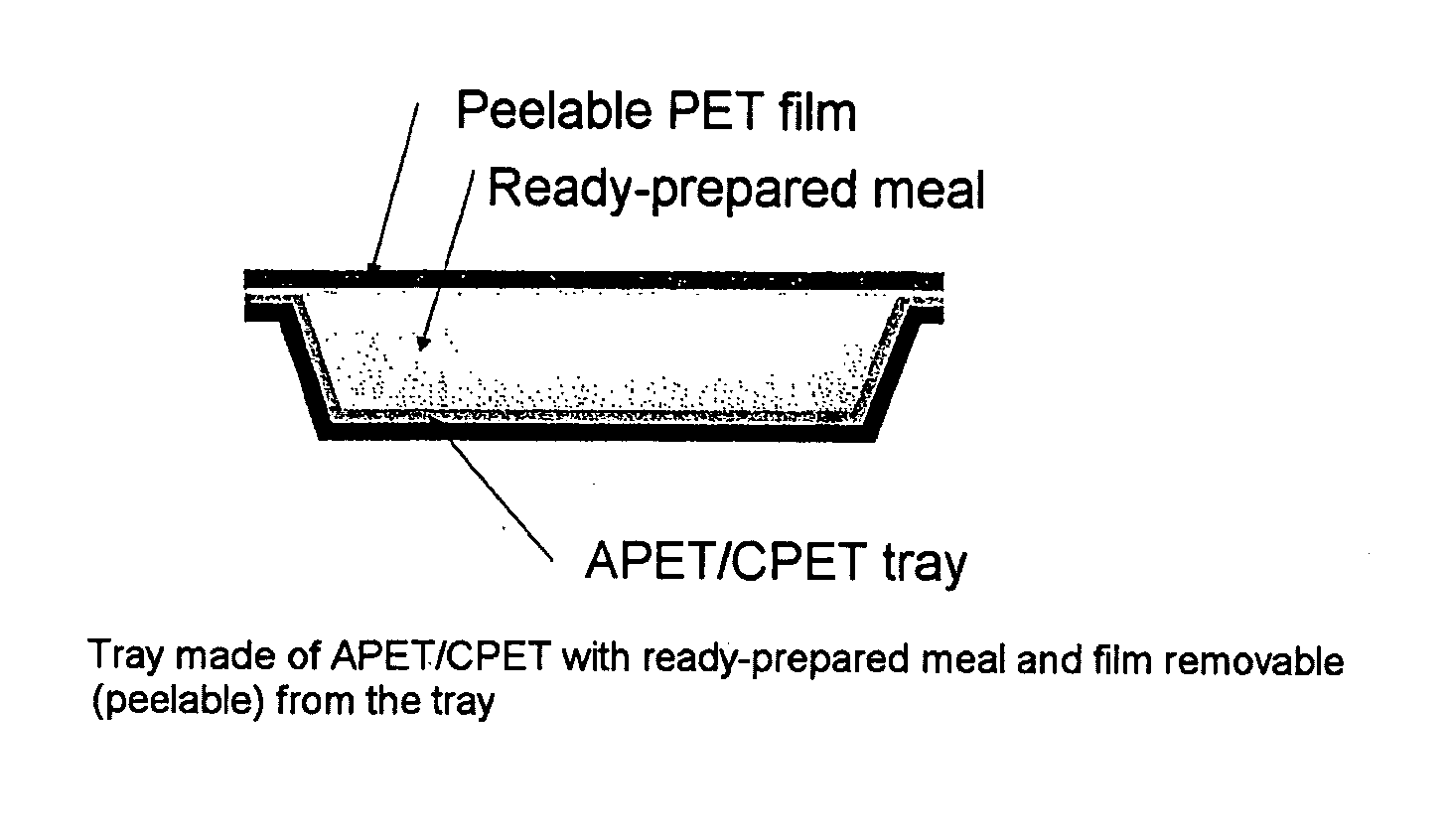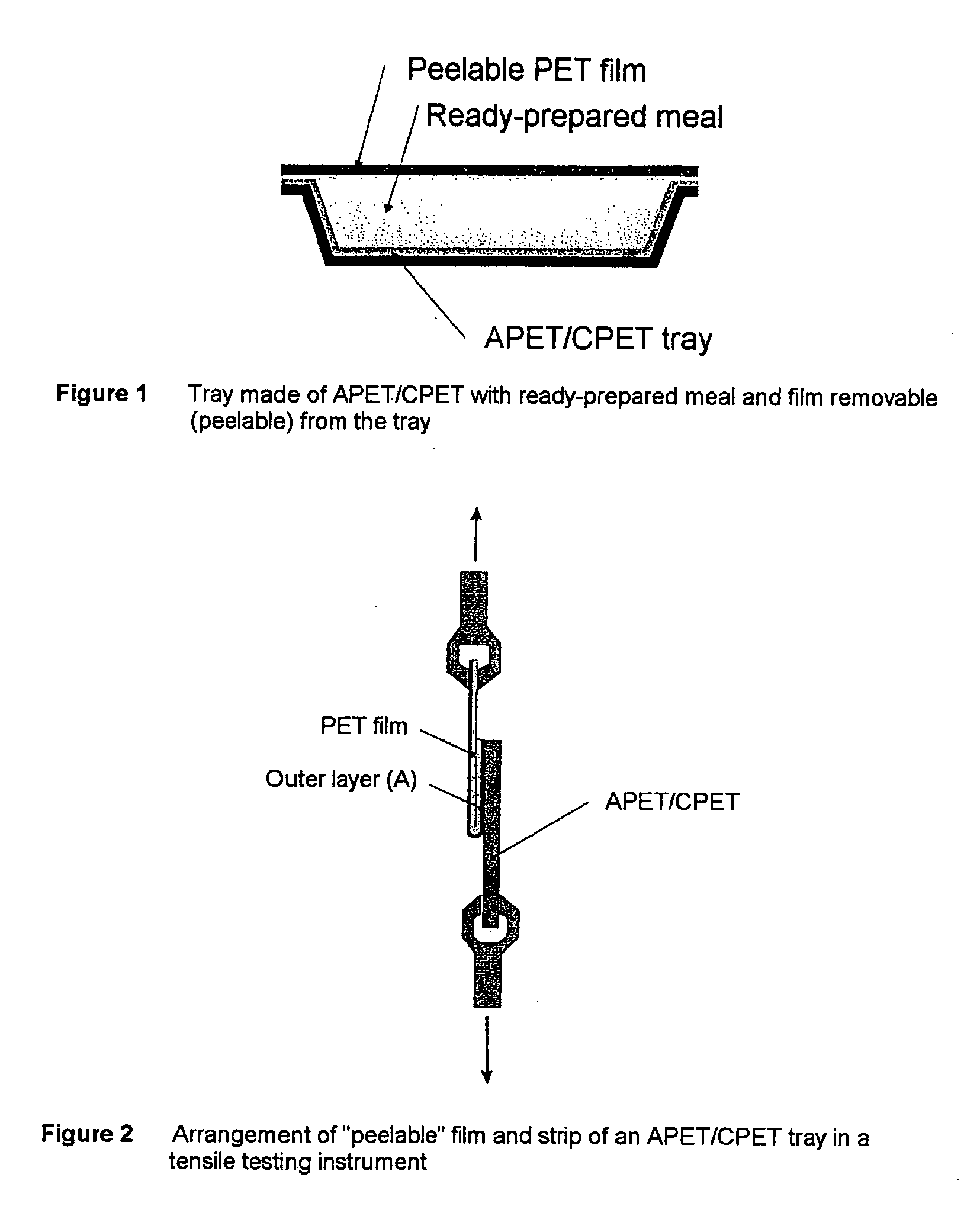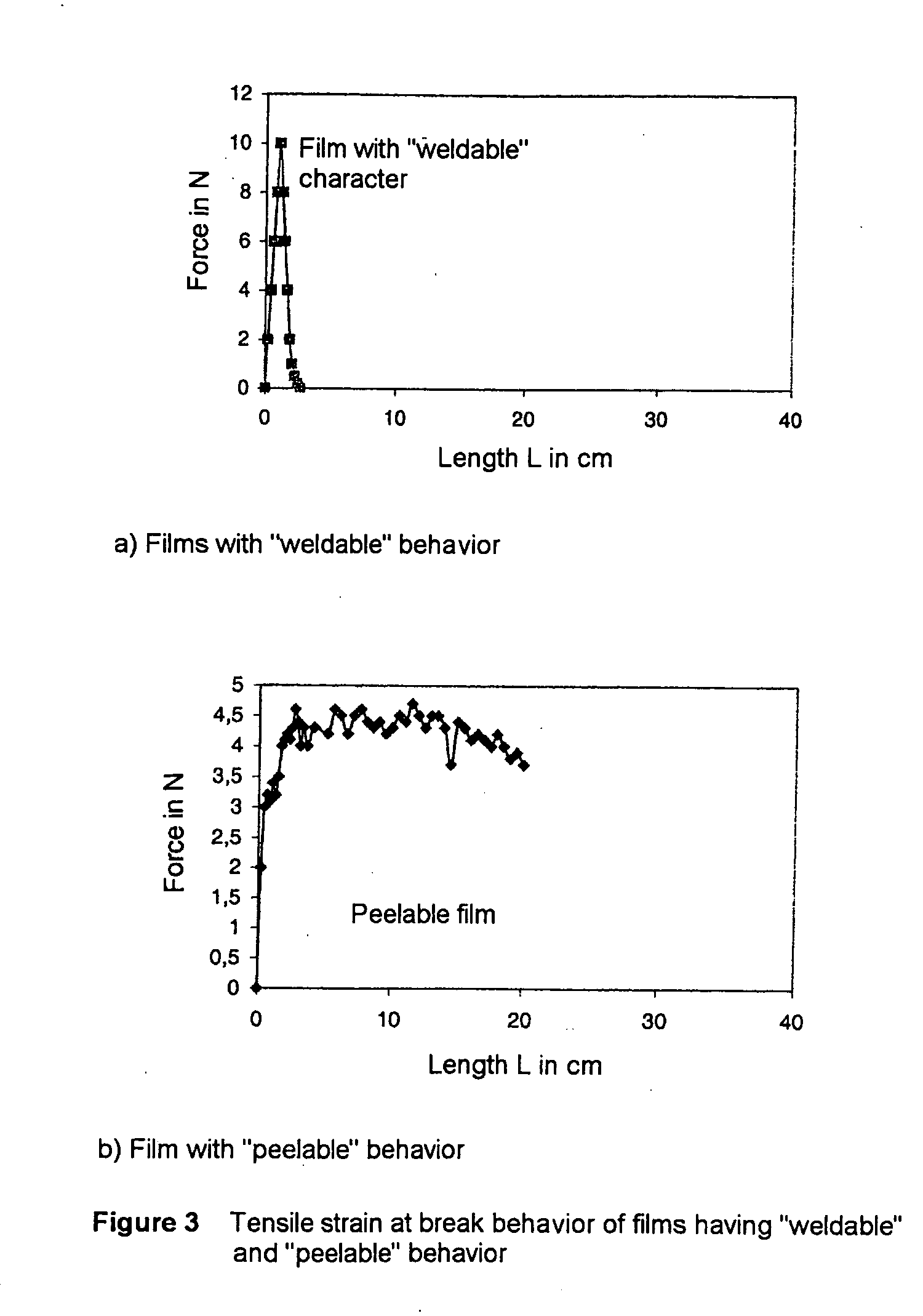Process for producing a coextruded, peelable polyester film
a coextruded, peelable technology, applied in the direction of fibre chemical features, coatings, lamination, etc., can solve the problems of unfavorable film destruction on removal from the tray, force falling immediately back to zero, and affecting the easy opening of the packaging without tools, etc., to achieve the effect of production costs
- Summary
- Abstract
- Description
- Claims
- Application Information
AI Technical Summary
Benefits of technology
Problems solved by technology
Method used
Image
Examples
example 1
[0174] Chips of polyethylene terephthalate are fed to the extruder for the base layer (B). Chips of polyethylene terephthalate and particles are likewise fed to the extruder (twin-screw extruder) for the nonsealable outer layer (C). In accordance with the process conditions listed in the table below, the raw materials are melted and homogenized in the two respective extruders.
[0175] In addition, a mixture including polyester I, polyester II and SiO2 particles is prepared for the heatsealable and peelable outer layer (A). In Table 2, the particular proportions of the dicarboxylic acids and glycols present in the two polyesters I and II in mol % and the particular proportions of the components present in the mixture in % by weight are specified. The mixture is fed to the twin-screw extruder with degassing for the sealable and peelable outer layer (A). In accordance with the process conditions detailed in the table below, the raw materials are melted and homogenized in the twin-screw ...
example 2
[0187] In comparison to example 1, the outer layer thickness of the sealable layer (A) is raised from 3.0 to 4.0 μm with similar film structure and otherwise identical production method. Polyester I now contains 20.0% by weight of SYLYSIA® 440 (synthetic SiO2, Fuji, Japan) having a particle diameter of d5=5.0 μm. The minimum sealing temperature of the film with respect to the APET side of APET / CPET trays is now 118° C. For all sealing temperatures, the films exhibit the desired peeling off from the tray according to FIG. 3b. The seal seam strengths measured are listed in column 3. For all sealing temperatures, peelable films are again obtained. The seal seam strengths of the inventive films are somewhat higher than in example 1. However, they are still in the medium range, so that the film can be removed from the tray without great force being applied. A somewhat lower opacity of the film is measured; the handling and the processing performance of the film are as in example 1.
example 3
[0188] In comparison to example 2, the composition of polyester II for the sealable outer layer (A) is changed with otherwise identical film structure. The mixture used in outer layer (A) now includes the following raw material proportions: [0189] 30% by weight of polyester I, identical to example 1; [0190] 60% by weight of polyester II, VITEL® 1912,(Polyester, Bostik-Findley, USA; contains the dicarboxylic acid constituents azelaic acid, sebacic acid, terephthalic acid, isophthalic acid and further dicarboxylic acids in the approximate molar ratio of 40 / 1 / 45 / 10 / 4 and, as the diol component, at least 60 mol % of ethylene glycol). The glass transition temperature of polyester II is approx. −1° C.; [0191] 10% by weight of COC (TOPAS® 8007, Ticona, Frankfurt; an ethylene / norbornene COC having a Tg of approx. 75° C.).
[0192] The minimum sealing temperature of the film produced in accordance with the invention with respect to the APET side of APET / CPET trays is now 125° C. For all sealin...
PUM
| Property | Measurement | Unit |
|---|---|---|
| Temperature | aaaaa | aaaaa |
| Temperature | aaaaa | aaaaa |
| Temperature | aaaaa | aaaaa |
Abstract
Description
Claims
Application Information
 Login to View More
Login to View More - R&D
- Intellectual Property
- Life Sciences
- Materials
- Tech Scout
- Unparalleled Data Quality
- Higher Quality Content
- 60% Fewer Hallucinations
Browse by: Latest US Patents, China's latest patents, Technical Efficacy Thesaurus, Application Domain, Technology Topic, Popular Technical Reports.
© 2025 PatSnap. All rights reserved.Legal|Privacy policy|Modern Slavery Act Transparency Statement|Sitemap|About US| Contact US: help@patsnap.com



